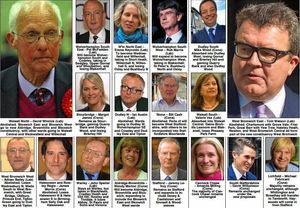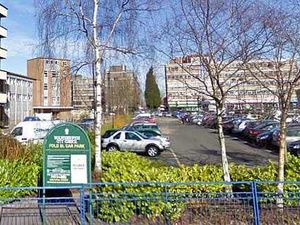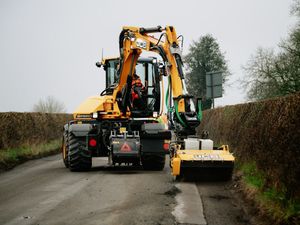Parliamentary boundary changes: West Midlands to feel brunt of shake-up
The West Midlands is one of the most deeply affected areas of the Boundary Commission's review of Parliamentary constituencies.

The region is set to lose six seats under the plans, which will see the total number of MPs in Britain reduced from 650 to 600.
And two seats in the Black Country will disappear, while some wards will come under Birmingham constituencies.

They include Sandwell's Abbey ward, which will be incorporated into Birmingham Edgbaston, Soho and Victoria, which becomes part of Ladywood, and Walsall's Pheasey Park Farm, which becomes part of Birmingham Erdington.
Meanwhile Brierley Hill will be put in to Stourbridge, leaving the new Dudley West ward without a civic centre, while Halesowen has been lumped in with Selly Oak.
David Winnick, whose Walsall North seat is one of those set for the axe, has criticised the Prime Minister over proposed changes to electoral boundaries, which he has branded undemocratic.
Addressing Theresa May at Prime Minister's Questions, Mr Winnick said: "How can she justify reducing the House of Commons to 600 when the House of Lords has 820 members?
"Is this her idea of democracy in the 21st century?"
In response the Prime Minister pointed out that the boundary changes had been voted in by the Commons.
She added that the Conservative Government had introduced retirement procedures in the House of Lords that had seen a reduction in their numbers.
Walsall North would see its wards incorporated into Walsall Central and Wednesfield and Willenhall, under the proposed changes.
The Black Country will be left with 11 wards, with Walsall North set to be abolished and the two West Bromwich seats carved up as part of the formation of a new West Bromwich constituency.
The changes will pit existing MPs for the same party against each other for re-election and could have a big impact on the outcome of the 2020 poll, as well as the internal dynamics of the leading parties, particularly Labour.
Back in 2010 David Cameron called for a reduction in the number of MPs in a bid to reduce the cost of politics, although critics accused him of trying to bring in changes that would benefit the Tories.
The plans were voted on in 2011 and passed through Parliament, although many MPs are against the changes on principle.
Some claim they are already overworked, and having larger constituencies will simply add to the burden.
Dudley MP Mike Wood says he is considering putting forward a counter proposal to Boundary Commission plans to change the make-up of his constituency.
Mr Wood's Dudley South seat will be abolished under the proposals, with wards split between Dudley West and Stourbridge. And he says there are 'weaknesses' in the plans.
"I think the Boundary Commission is making a mistake in point blank refusing to split wards," Mr Wood said.
"Instead they have moved some areas in the Black Country into constituencies that don't appear to be a good fit.
"It seems to be more of a mathematical formula rather than an approach that takes into account the specifics of communities. I will be taking a detailed look at how the changes affect Dudley South and talking to constituents before deciding whether to make a counter proposal."
The current review is based on proposals that were initially agreed by the coalition government in 2011 but subsequently put on hold.
Some experts believe the shake-up goes some way to remedying anomalies in the system – such as the disparities in constituency sizes which means MPs need different amounts of votes to get elected – which were historically unfair on the Tories.
But Labour claims the opposite, accusing the Conservatives of seeking to gerrymander the boundaries to their own political advantage.
However, the plans, which are due to be implemented by 2020, are likely to take years to finalise.
Next February the boundary commissions for England, Scotland, Wales and Northern Ireland start work on redrawing the Commons constituency boundaries under rules laid down by Parliament.
Then in the autumn the commissions' publish their initial proposals and start a series of 12-week consultation periods, where representations will be invited in writing or at public hearings.
These representations are due to be published in early 2017, followed by further consultations and revisions.
A final report is due in September 2018





